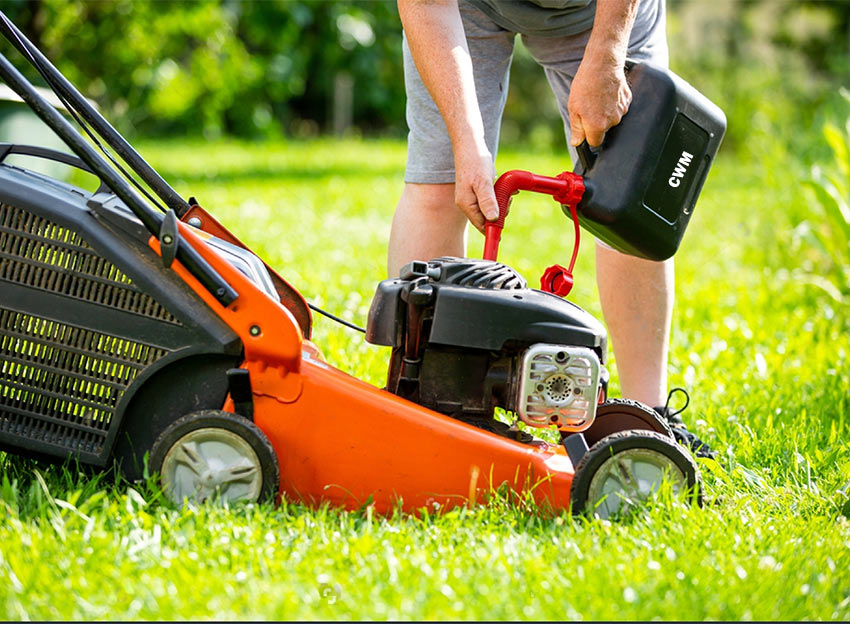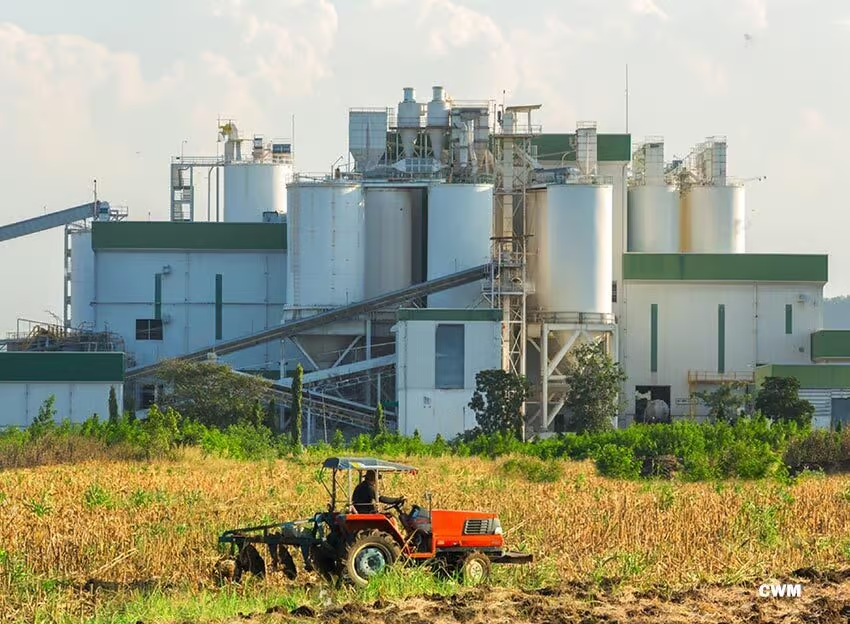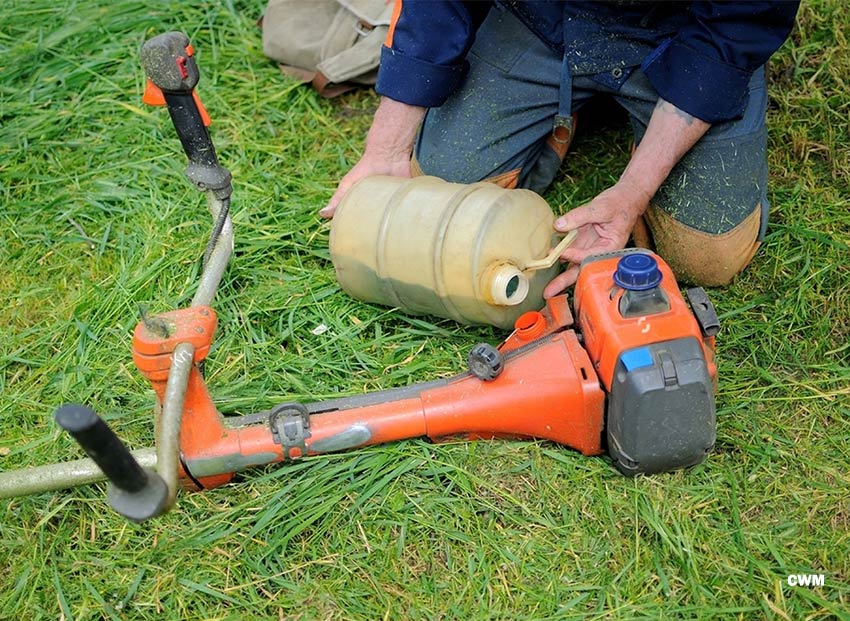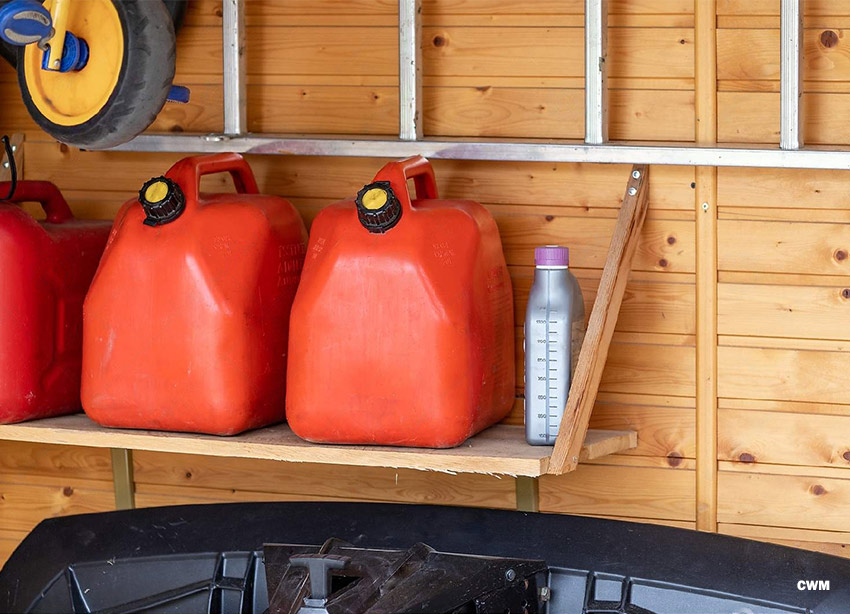You may have seen people talking about ethanol gas on social media and garden forums, especially when it comes to chainsaws and other outdoor power equipment. Most of these tools are designed to use unleaded gasoline, but it seems like people are always discussing the benefits of ethanol-free fuel. To help clear things up, this article will go over the basics of ethanol gas.
Table of Contents
Understanding Ethanol Content in Unleaded Gasoline in the U.S.

In the US, there is no legal requirement to include ethanol in gasoline, but there is a scheme called the Renewable Fuel Standard that requires transportation fuel to contain renewable sources, such as ethanol. This program has four distinct categories of renewable fuels, each with a specific amount of ethanol to be blended into the gasoline, that differ based on the fuel type and year. It is up to gasoline producers and importers to decide how much ethanol must be mixed with their gasoline in order to meet the RFS criteria. This is why ethanol fuel is the most typical option for passenger vehicles to meet the RFS guidelines.
Distinguishing Between E10 and Unleaded Gasoline
In the United States, the most common type of ethanol-blended gasoline is referred to as “E10,” which typically contains up to 10% ethanol and 90% gasoline. However, you won’t usually see this label at the pump; instead, it’s often labeled as “unleaded” or “unleaded plus.” Other gasoline blends, like E15 and E85, contain higher levels of ethanol than E10. While any gasoline-powered vehicle in the U.S. can use E10, only vehicles manufactured after 2001 can use E15. Engines designed to handle even higher ethanol concentrations are required for fuels like E85, which typically contain 51% to 83% ethanol. These types of fuels can only be used in flexible-fuel (Flex-Fuel) vehicles.
The Process of Producing Ethanol Gasoline
The production process of ethanol gas involves a technique called fermentation. In this process, manufacturers use microorganisms such as yeast to break down the sugars present in plant material. It’s worth noting that ethanol fuel is not intended for human consumption.

The most commonly used plant material for making ethanol fuel is corn. Although other grains such as wheat and barley can also be used, corn is the primary source for ethanol fuel production in the U.S.
- Step 1 of producing ethanol fuel involves grinding the plant material down to a fine powder. This is necessary to ensure that the material is sufficiently exposed to the subsequent steps, which will maximize the use of the material.
- Step 2 entails mixing the plant material with water to create a slurry, which is then heated and mixed with enzymes. This breaks down the complex sugars in the plant material into simpler sugars.
- Step 3, the cooled mixture is fermented by adding yeast. The yeast feeds on the simple sugars, which converts them into ethanol and carbon dioxide. This fermentation process is the final step in producing ethanol fuel.
- Step 4. Once the fermentation process is complete, the next step is distillation. During distillation, the ethanol and water are separated. The mixture is heated to a temperature at which the ethanol vaporizes, but the water does not. The vapor is then collected, and as it cools, the ethanol condenses back into a liquid.
- Step 5. In the final step, the ethanol is combined with chemicals like gasoline or methanol to create a fuel suitable for use in internal combustion engines. This blending process produces different ethanol fuel blends, such as E10 (regular unleaded), E15, or even E85, depending on the amount of gasoline added to the mix. The resulting ethanol fuel is ready for use in vehicles that are compatible with the specific ethanol blend.
Can Ethanol Gas Harm Chainsaws, Lawn Mowers, Trimmers and Blowers?
Ethanol fuel can potentially harm outdoor power equipment, as it may cause engine problems. The reason for this is that ethanol is an alcohol, and it can lead to moisture build-up in the fuel system, which can cause corrosion and other issues that could potentially damage the engines of lawn mowers, trimmers, blowers, and edgers.

Furthermore, ethanol can accelerate the breakdown of the fuel, reducing its shelf life. This can result in decreased engine performance, and starting difficulties if the engine is not properly winterized.
According to a Consumer Reports article, a study by the Department of Energy found that E15 can cause hotter operating temperatures, erratic running, and engine-part failure. However, even gasoline with the usual 10% ethanol (E10) can also contribute to damaging small engines. Ethanol has properties that can corrode metal parts, such as carburetors, degrade plastic and rubber components, make starting harder, and reduce engine life. The effects become more severe as the ethanol content increases. Servicing dealers have also reported similar problems, even with E10, according to the Outdoor Power Equipment Institute (OPEI), an industry trade group.
How Long Can Ethanol Gas be Stored?

The longevity of ethanol gas or fuel can be influenced by multiple factors, including the type of fuel and storage conditions. Typically, ethanol fuel can remain usable for 6–12 months if stored appropriately. Nevertheless, ethanol fuel is more susceptible to degradation, and it also attracts moisture from the air, leading to further problems. Proper sealing of containers when not in use is crucial to prevent moisture build-up, which is why it’s advisable to use fuel additives like STA-BIL, Star Tron, Royal Purple Max, Yamaha Yamalube, etc. to extend the shelf life of ethanol fuel beyond 6 months.
Conclusion
It’s important to be aware of the potential issues that can arise from using ethanol fuel in outdoor power equipment, but it’s not necessary to avoid using it altogether. Taking proper storage and maintenance precautions, such as minimizing storage periods, using fuel stabilizers, and winterizing equipment, can help prevent issues and ensure reliable performance. Ultimately, learning to deal with ethanol gas is a practical reality for those using outdoor power equipment in the United States.

